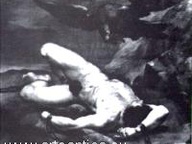Jan Fabre. Gli Anni dell’Ora Blu

Jan Fabre. Gli Anni dell’Ora Blu
Dal 14 October 2015 al 10 November 2015
Roma
Luogo: Magazzino Arte Moderna
Indirizzo: via dei Prefetti 17
Orari: da martedì a sabato 11-20
Costo del biglietto: ingresso gratuito
Telefono per informazioni: +39 06 6875951
E-Mail info: info@magazzinoartemoderna.com
Sito ufficiale: http://www.magazzinoartemoderna.com
E’ con grande piacere che Magazzino annuncia la quinta personale dell’artista belga Jan Fabre in galleria.
La mostra, intitolata Gli Anni dell’Ora Blu presenta per la prima volta in Italia la serie omonima di opere realizzate con la penna Bic negli anni Ottanta e Novanta. La bic-art, questo il termine con cui Fabre designa questo ramo della sua produzione, inizia alla fine degli anni Settanta con una serie di performance, in cui l’artista si relaziona, espandendo la tradizionale bidimensionalità del disegno, allo spazio e alla storia dell’arte. Pareti, oggetti, intere stanze ed edifici vengono trasformate attraverso il segno ossessivo della penna, annullate ma allo stesso tempo consacrate nelle loro forme dal passaggio dell’artista.
In questo contesto si sviluppano alcune tra le opere più celebri di Fabre come la serie Ilad of the Bic-Art, Tivoli (il cui video è presentato in mostra) del 1991 o la Blaue Raum realizzata nel 1988 al Bethanien o il monumentale The Hour Blue in collezione allo SMAK di Gent, fino a Das Medium (una delle prime opere di bic Art, realizzata nel 1979) in cui il disegno si materializza nell’oggetto, e il medium dell’opera diventa il corpo.
Nella serie di opere presentate in mostra, Fabre sintetizza un universo di simboli, metafore, fantasie e realtà, che emergono, quasi senza contorno, dal blu profondo del disegno. L’ora crepuscolare è essa stessa una metafora di un passaggio, di una metamorfosi, un tema che ricorre nella produzione pluridecennale dell’artista fiammingo.
Pugnali, spade, demoni, animali reali e fantastici, un immaginario che spesso attinge alla storia dell’arte e più in generale a una dimensione spirituale e mistica che si risolve però spesso nell’universo materiale della natura e dei suoi passaggi, guidano il nostro sguardo attraverso un mondo-momento (la metafora del crepuscolo) in cui le figure emergono sulla superficie scarabocchiata, sembrano prevalere e al contempo essere risucchiate dal gesto invasivo tracciato dalla penna.
In qualche modo, come nota Lorand Hegyi nel suo testo per la mostra realizzata al Museo Metropole Saint-Etienne nel 2011, l’Ora Blu è forse l’invito migliore per “schiudere agli occhi dell’osservatore, l’universo poetico e sensibile dell’eccezionale creatore che è Jan Fabre”.
La mostra si tiene in occasione della prima italiana della nuova opera teatrale di Fabre, Mount Olympus – To Glorify the Cult of Tragedy, una performance unica che sarà presentata a cavallo tra il 17 e il 18 Ottobre al Teatro Argentina nell’ambito del RomaEuropa Festival 2015, e che ha la durata di 24 ore consecutive.
Da più di 35 anni, Jan Fabre è emerso internazionalmente come una delle figure più innovative della sua generazione, incarnando la figura dell’artista “totale” attivo e apprezzato come regista teatrale, scultore, performer e autore. Con L’Ange de la Métamorphose nel 2008, è stato il primo artista vivente ad essere invitato ad esporre al Louvre di Parigi. Tra le sue mostre recenti più significative Hortus/Corpus al Kröller-Müller Museum di Otterlo in Olanda (2011) e The Years of the Hour Blue al Kunsthistorisches Museum di Vienna (2011). Il Museo MAXXI e il M HKA di Anversa hanno ospitato la prima grande retrospettiva delle sue performance: Stigmata, Actions et Performances 1976-2013. Il PinchukArtCenter di Kiev ha presentato recentemente una mostra in due parti: Tribute to Hiëronymus Bosch in Congo (2011-2013) and Tribute to Belgian Congo (2010-2013). Al Museo Reale delle Belle Arti del Belgio, sono in mostra Le Regard en Dedans (l’Heure Bleue) (2011-2013) – un’installazione permanente per la Scalinata Reale del Museo – insieme alla serie Chapters I-XVIII. Waxes & Bronzes (2010), due dei quali sono stati donati al Museo degli Uffizi a Firenze. Il 18 Novembre, infine, la Cattedrale di Ns. Signora di Anversa accoglierà la scultura 'The man who bears the cross' (2015). E’ la prima volta in cento anni che la Diocesi acquisisce un’opera d’arte, che sarà installata in relazione diretta La Deposizione dalla Croce di Peter Paul Rubens (1611-1614).
Inaugurazione: 14 Ottobre 2015 ore 19
La mostra, intitolata Gli Anni dell’Ora Blu presenta per la prima volta in Italia la serie omonima di opere realizzate con la penna Bic negli anni Ottanta e Novanta. La bic-art, questo il termine con cui Fabre designa questo ramo della sua produzione, inizia alla fine degli anni Settanta con una serie di performance, in cui l’artista si relaziona, espandendo la tradizionale bidimensionalità del disegno, allo spazio e alla storia dell’arte. Pareti, oggetti, intere stanze ed edifici vengono trasformate attraverso il segno ossessivo della penna, annullate ma allo stesso tempo consacrate nelle loro forme dal passaggio dell’artista.
In questo contesto si sviluppano alcune tra le opere più celebri di Fabre come la serie Ilad of the Bic-Art, Tivoli (il cui video è presentato in mostra) del 1991 o la Blaue Raum realizzata nel 1988 al Bethanien o il monumentale The Hour Blue in collezione allo SMAK di Gent, fino a Das Medium (una delle prime opere di bic Art, realizzata nel 1979) in cui il disegno si materializza nell’oggetto, e il medium dell’opera diventa il corpo.
Nella serie di opere presentate in mostra, Fabre sintetizza un universo di simboli, metafore, fantasie e realtà, che emergono, quasi senza contorno, dal blu profondo del disegno. L’ora crepuscolare è essa stessa una metafora di un passaggio, di una metamorfosi, un tema che ricorre nella produzione pluridecennale dell’artista fiammingo.
Pugnali, spade, demoni, animali reali e fantastici, un immaginario che spesso attinge alla storia dell’arte e più in generale a una dimensione spirituale e mistica che si risolve però spesso nell’universo materiale della natura e dei suoi passaggi, guidano il nostro sguardo attraverso un mondo-momento (la metafora del crepuscolo) in cui le figure emergono sulla superficie scarabocchiata, sembrano prevalere e al contempo essere risucchiate dal gesto invasivo tracciato dalla penna.
In qualche modo, come nota Lorand Hegyi nel suo testo per la mostra realizzata al Museo Metropole Saint-Etienne nel 2011, l’Ora Blu è forse l’invito migliore per “schiudere agli occhi dell’osservatore, l’universo poetico e sensibile dell’eccezionale creatore che è Jan Fabre”.
La mostra si tiene in occasione della prima italiana della nuova opera teatrale di Fabre, Mount Olympus – To Glorify the Cult of Tragedy, una performance unica che sarà presentata a cavallo tra il 17 e il 18 Ottobre al Teatro Argentina nell’ambito del RomaEuropa Festival 2015, e che ha la durata di 24 ore consecutive.
Da più di 35 anni, Jan Fabre è emerso internazionalmente come una delle figure più innovative della sua generazione, incarnando la figura dell’artista “totale” attivo e apprezzato come regista teatrale, scultore, performer e autore. Con L’Ange de la Métamorphose nel 2008, è stato il primo artista vivente ad essere invitato ad esporre al Louvre di Parigi. Tra le sue mostre recenti più significative Hortus/Corpus al Kröller-Müller Museum di Otterlo in Olanda (2011) e The Years of the Hour Blue al Kunsthistorisches Museum di Vienna (2011). Il Museo MAXXI e il M HKA di Anversa hanno ospitato la prima grande retrospettiva delle sue performance: Stigmata, Actions et Performances 1976-2013. Il PinchukArtCenter di Kiev ha presentato recentemente una mostra in due parti: Tribute to Hiëronymus Bosch in Congo (2011-2013) and Tribute to Belgian Congo (2010-2013). Al Museo Reale delle Belle Arti del Belgio, sono in mostra Le Regard en Dedans (l’Heure Bleue) (2011-2013) – un’installazione permanente per la Scalinata Reale del Museo – insieme alla serie Chapters I-XVIII. Waxes & Bronzes (2010), due dei quali sono stati donati al Museo degli Uffizi a Firenze. Il 18 Novembre, infine, la Cattedrale di Ns. Signora di Anversa accoglierà la scultura 'The man who bears the cross' (2015). E’ la prima volta in cento anni che la Diocesi acquisisce un’opera d’arte, che sarà installata in relazione diretta La Deposizione dalla Croce di Peter Paul Rubens (1611-1614).
Inaugurazione: 14 Ottobre 2015 ore 19
SCARICA IL COMUNICATO IN PDF
COMMENTI

-
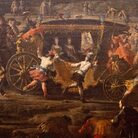 Dal 20 December 2025 al 20 April 2026
Caserta | Reggia di Caserta
Dal 20 December 2025 al 20 April 2026
Caserta | Reggia di Caserta
Regine: trame di cultura e diplomazia tra Napoli e l’Europa
-
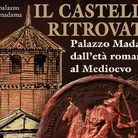 Dal 19 December 2025 al 23 March 2026
Torino | Palazzo Madama - Museo Civico d’Arte Antica
Dal 19 December 2025 al 23 March 2026
Torino | Palazzo Madama - Museo Civico d’Arte Antica
Il castello ritrovato. Palazzo Madama dall’età romana al medioevo
-
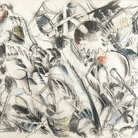 Dal 17 December 2025 al 19 January 2026
Roma | Palazzo della Cancelleria
Dal 17 December 2025 al 19 January 2026
Roma | Palazzo della Cancelleria
De Humana Mensura di Linda Karshan
-
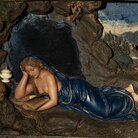 Dal 18 December 2025 al 12 April 2026
Firenze | Gallerie degli Uffizi
Dal 18 December 2025 al 12 April 2026
Firenze | Gallerie degli Uffizi
Cera una volta. Sculture dalle collezioni medicee
-
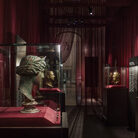 Dal 11 December 2025 al 9 April 2026
Firenze | Museo Archeologico Nazionale di Firenze
Dal 11 December 2025 al 9 April 2026
Firenze | Museo Archeologico Nazionale di Firenze
Icone di Potere e Bellezza
-
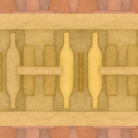 Dal 11 December 2025 al 11 January 2026
Roma | Palazzo Esposizioni Roma
Dal 11 December 2025 al 11 January 2026
Roma | Palazzo Esposizioni Roma
Giorgio Morandi nella Collezione Eni. Un viaggio attraverso la storia culturale del cane a sei zampe e l’eredità di Enrico Mattei

